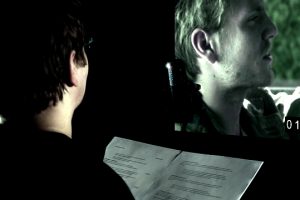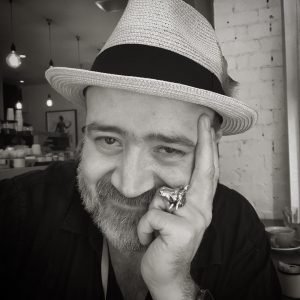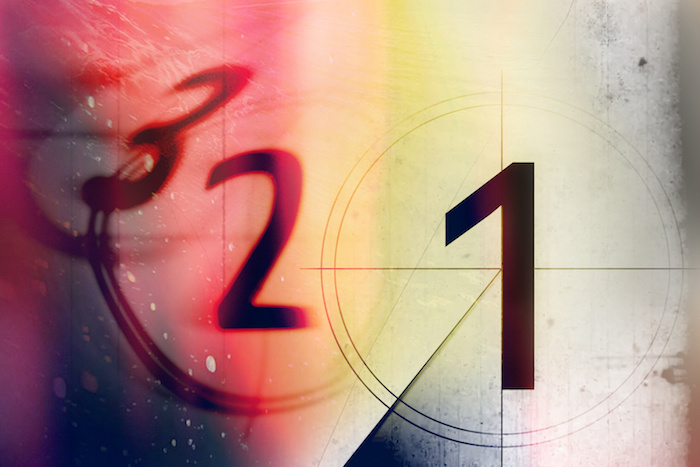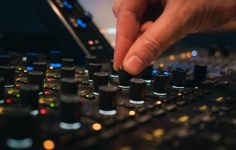In this, the first in a series of articles on ADR, we look at the craft from the actor’s point of view.
We do so with the help of RTS-Award winning Supervising Sound Editor Chris Roberts.
The odd thing about ADR (or looping, if you prefer) is that while everyone, even the layman, the proverbial man-in-the-street, knows exactly what it is; there’s still an awful lot of misinformation around. This lack of understanding doesn’t help the actor, the editor or the production.
It’s as if ADR is a dirty little secret. As if it’s cheating, fixing it in post. Much like the oversimplified perception of AutoTune in music.
So in this, the first of my articles on ADR, I decided to come at it from the other side of the glass, from the actor’s perspective.
5 Things Actors Need to know about ADR
1. ADR is not a punishment. You’ve not done anything wrong!
There is the perception that actors, on the whole, dislike doing ADR. That’s entirely understandable. When the camera was rolling they were in the moment, immersed in the character and the scene, playing off their fellow actors – the actor performed. Why then, weeks later, are they being dragged into a soundproof studio and asked to do it all again, alone and out of context?
When an actor is called for an ADR session, often the immediate thought is that something bad happened – a technical problem with the location sound, or (more importantly for the actor) that there was something “wrong” with their performance.
The truth is, this is almost never why ADR is done.
 Real technical problems with location sound are thankfully very rare. Imagine an exterior scene in a period drama; a young couple having an intimate conversation as they walk through the gardens of the beautiful country house. All the dialogue is perfectly recorded and audible, but so is the traffic from the motorway half a mile away. The sound of traffic is in the same range as the human voice, so cannot be filtered out without adversely affecting the actors’ voices. All the dialogue will have to be re-recorded by the actors in an ADR session.
Real technical problems with location sound are thankfully very rare. Imagine an exterior scene in a period drama; a young couple having an intimate conversation as they walk through the gardens of the beautiful country house. All the dialogue is perfectly recorded and audible, but so is the traffic from the motorway half a mile away. The sound of traffic is in the same range as the human voice, so cannot be filtered out without adversely affecting the actors’ voices. All the dialogue will have to be re-recorded by the actors in an ADR session.
On the very rare occasions where an actor is asked to alter the performance in an ADR session, it is due to factors other than a “bad” performance. During the course of editing, a scene may have been shortened, removed or restructured, which may mean that certain line readings do not work as well in the new context. Re-recording a line with a different emphasis or inflection can often be just what is required to perfect the new shape of a scene.
There have also been instances where a director has actually admitted that the performance note they gave to an actor when shooting the scene was wrong!
2. ADR is not cheating, it’s part of the storytelling process.
It may be surprising, but a high proportion of ADR is not recorded to replace the original sync performance. The storytelling process doesn’t stop when the shoot wraps. It is constantly being refined through the editing process.
As such, producers, directors or writers may feel that a line needs to change, or be added, to help make sense of the narrative or an element of character development. Or, a new line may need to be added to add context to a scene because a preceding scene has been cut.
Refining dialogue in ADR is a legitimate part of the craft of stortytelling.
As legitimate as script writing, shooting, editing and acting. So it’s important to find ways to help the actor deliver a compelling performance in post-production.
The ADR Supervisor will cue extra lines to be re-recorded leading into and out of the new or amended line. This may seem like generating unnecessary work for the actor when only one new line is actually required, but re-recording the other lines helps the actor to put the new line into context by giving them the opportunity to perform the new line as part of the whole speech. This helps the actor to match the dialogue from the original performance in terms of pitch, tone, register and most importantly emotion.
3. At some point, you’re going to have to to ADR.
It seems that most, if not all, British drama schools still focus on training actors to perform on stage. There seems to be very little time spent on screen acting skills. Certainly the craft of performing in an ADR studio is not taught.
I t’s not necessarily an easy thing to do, but it will be required of any TV or film actor in a principal role. Some actors, often those with a very musical ear, are naturally incredibly good at ADR. Others find it more difficult. Young actors, called for their first ADR session, will often walk into the ADR studio lacking in confidence. Full of the fears addressed in the first section of this article.
t’s not necessarily an easy thing to do, but it will be required of any TV or film actor in a principal role. Some actors, often those with a very musical ear, are naturally incredibly good at ADR. Others find it more difficult. Young actors, called for their first ADR session, will often walk into the ADR studio lacking in confidence. Full of the fears addressed in the first section of this article.
There are many ways in which an actor can approach ADR in a session; different methods, tips and tricks that can be employed to approach a scene, recreate a performance or make new lines connect with those recorded two months earlier.
Most actors develop these post-production performance skills through their careers, but it would be so much better if even the rudiments could be taught in the drama schools where our young actors are building the foundations of their skillsets. Being able to walk into their first professional ADR session with confidence and some knowledge can only be a good thing for them, and for the production of which they are part.
4. ADR is not a voiceover
A common issue when recording ADR is the change of environment. From the highly-charged shoot to the comfort and relative calm of the post production facility. There can be a subliminal change in the mindset of the actor – from character performance to voiceover artist. An ADR performance is most definitely not a voiceover performance.
The most common note given to actors in an ADR studio relates to voice projection. On set or location there will always be a certain amount of ambient background. The human brain does an incredible job of regulating the voice, and will subliminally project it enough to be heard even in an intimate, emotional context.
In a soundproof ADR studio, there is none of the ambient sound of a set or location. Often an actor’s instinct is to deliver the lines to the mic or the other people in the room.
On playback, the re-recorded lines will not match the original because that element of vocal projection, however slight, is missing. The key note for the actor is to listen to the original performance and match the level and projection. Don’t worry about breaking the microphone!
5. There’s plenty of work in Crowd ADR, when you’re in between roles
The choice of acting as a career is notoriously risky. What many actors don’t know is that there is regular, decently-paid work to be had in providing “Crowd ADR”, also known as “Loop Group”.
When a scene is shot, supporting artists (“extras”) will be miming any conversations they appear to be having so that the principal actors’ dialogue can be recorded cleanly. Once the film or episode has been edited, a specialist casting agent will be contacted to provide a group of actors to add voices to the supporting artists in the scenes according to the ADR Supervisor’s cues.
This could be background chat in a restaurant or bar. Reactions to a fight or car chase. Adding specific lines for background characters either on screen or on the ’phone. Radio or television presenter voices, or occasionally re-voicing a supporting artist’s on-screen dialogue (usually because a local Supporting Artist’s accent is not right for the context of the story).
Crowd ADR actors are generally paid a session fee, and might also receive ongoing residual payments.
These sessions are not only a source of income; they are another way to utilise the skills and craft that actors spend a lot of time and money learning and developing. The best Crowd ADR actors are good improvisers, have a range of accents and good observational skills, and can quickly lip-sync to replace another actor’s dialogue.
And then there’s foreign language dubbing…….
In Part 2 of this series we’ll look at ADR from the other side of the glass, from the perspective of the audio engineer.

About the author
Chris Roberts is Head of Sound Editorial at Resound Sound Ltd, and served as Chairman of AMPS (Association of Motion Picture Sound) between 2010 and 2013.
In a career in post production sound spanning more than 20 years, Chris has worked as either Supervising Sound Editor or ADR Mixer on TV projects such as Fortitude, Ripper Street and Episodes; and Feature films such as Star Wars Episode 2, Alien vs Predator, and X-Men 2.
Follow Chris on Twitter @resound_sound


